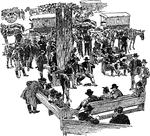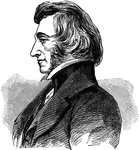
Charles Ellet
Charles Ellet, Jr. (1 January 1810 – 21 June 1862) was a civil engineer and a colonel during the…
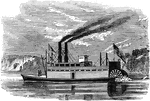
Ellet's Stern Wheel Ram
Charles Ellet, Jr. (1 January 1810 – 21 June 1862) was a civil engineer and a colonel during the…
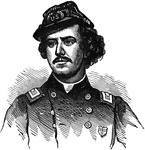
Ephraim Elmer Ellsworth
Elmer Ephraim Ellsworth (April 11, 1837 – May 24, 1861) was a lawyer and soldier, best known as…
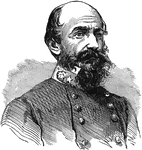
Richard Stoddert Ewell
Richard Stoddert Ewell (February 8, 1817 – January 25, 1872) was a career U.S. Army officer and…

Fair Oaks
The Battle of Seven Pines, also known as the Battle of Fair Oaks or Fair Oaks Station, took place on…
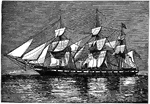
The Hartford, Farragut's Flagship
The Hartoford departed the Delaware Capes 28 January, 1862 as flagship of Flag Officer David…

John Buchanan Floyd
John Buchanan Floyd (June 1, 1806 – August 26, 1863), was a Virginia politician (legislator and governor),…
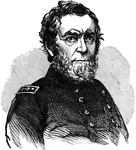
Andrew Hull Foote
Andrew Hull Foote (September 12, 1806 – June 26, 1863) was an admiral in the United States Navy…
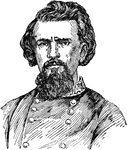
Nathan Bedford Forrest
Nathan Bedford Forrest (July 13, 1821 – October 29, 1877) was a lieutenant general in the Confederate…
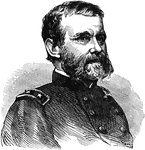
William Buel Franklin
William Buel Franklin (February 27, 1823 – March 8, 1903) was a career United States Army officer…

Battlefield of Franklin
The Second Battle of Franklin (more popularly known simply as The Battle of Franklin) was fought at…
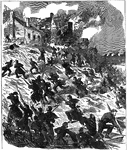
The Attack on Fredericksburg
The Battle of Fredericksburg, fought in and around Fredericksburg, Virginia, from December 11 to December…
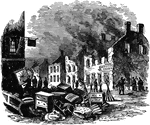
Scene in Fredericksburg on the Morning of Dec. 12, 1862
The Battle of Fredericksburg, fought in and around Fredericksburg, Virginia, from December 11 to December…
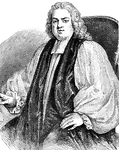
Bishop Thomas Wilson
Thomas Wilson (20 December 1663 – 7 March 1755) was Anglican Bishop of Sodor and Man between 1697…

Fort Taylor
The Fort Zachary Taylor State Historic Site, better known simply as Fort Taylor, (or Fort Zach to locals),…
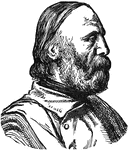
Giuseppe Garibaldi
Giuseppe Garibaldi (July 4, 1807 - June 2, 1882) was an Italian military and political figure.

Where the Battle of Gettysburg Began
The Battle of Gettysburg (July 1-3, 1863), fought in and around the town of Gettysburg, Pennsylvania,…

Battleground of Little Round Top
Little Round Top is the smaller of two rocky hills south of Gettysburg, Pennsylvania. It was the site…

The Soldiers' Monument at Gettysburg
The monument erected to remember the soldiers who fought at the Battle of Gettysburg.
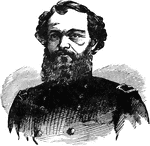
Quincy Adams Gillmore
Quincy Adams Gillmore (February 25, 1825 - April 11, 1888) was an American civil engineer, author, and…
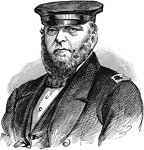
Louis Malesherbes Goldborough
Louis Malesherbes Goldsborough (February 18, 1805 - February 20, 1877) was an admiral in the United…
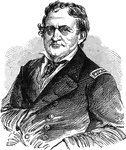
Francis Hoyt Gregory
Francis Hoyt Gregory (October 9, 1780 - October 4, 1866) was an officer in the United States Navy during…
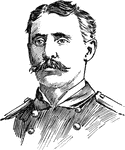
Charles Vernon Gridley
Charles Vernon Gridley (24 November 1844 - 25 May 1898) was an officer in the United States Navy during…
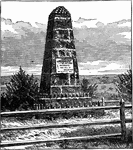
Soldiers' Monument at Groveton
A monument erected to commemorate the soldiers who fought at the Battle of Groveton, also known as the…

Foote's Gunboat Flotilla in 1862
USS Pittsburgh (1861) was a City class ironclad gunboat constructed for the Union Navy during…
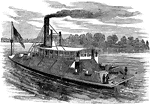
The New Era
USS New Era (1862) was a steamer acquired by the Union Navy during the American Civil War.…

The Louisiana
The second USS Louisiana was a propeller-driven iron hull steamer in the United States Navy…
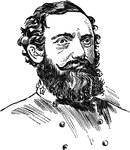
Wade Hampton III
Wade Hampton III (March 28, 1818 - April 11, 1902) was a Confederate cavalry leader during the American…
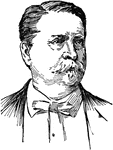
Winfield Scott Hancock
Winfield Scott Hancock (February 14, 1824 - February 9, 1886) was a career U.S. Army officer and the…

View of Harper's Ferry, 1862, Looking South
The town of Harper's Ferry, where an important Civil War battle was fought in 1862.

Burning of the Arsenal at Harper's Ferry
The burning of the arsenal in Harper's Ferry during the American Civil War
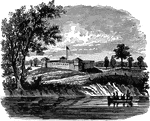
Fort Harrison, on the Wabash
Fort Harrison was an important component of the Confederate defenses of Richmond during the American…

Theodor Mommsen
Christian Matthias Theodor Mommsen (30 November 1817 – 1 November 1903) was a German classical scholar,…
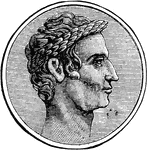
Julius Caesar (profile)
An illustration of Caesar. A politician of the populares tradition, he formed an unofficial triumvirate…
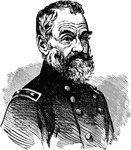
Samuel Peter Heintzelman
Samuel Peter Heintzelman (September 30, 1805 - May 1, 1880) was a United States Army General. He served…
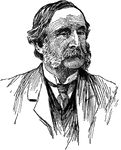
Thomas Wentworth Higginson
Thomas Wentworth Higginson (December 22, 1823 - May 9, 1911) was an American minister, author, abolitionist,…
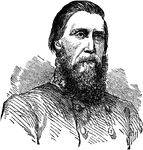
John Bell Hood
John Bell Hood (June 1 or June 29, 1831 - August 30, 1879) was a Confederate general during the American…
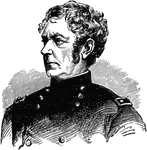
Joseph Hooker
Joseph Hooker (November 13, 1814 - October 31, 1879) was a career United States Army officer, fought…
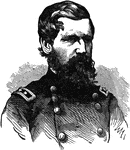
Oliver Otis Howard During the Civil War
Oliver Otis Howard (November 8, 1830 - October 26, 1909) was a career United States Army officer and…
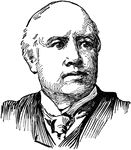
Robert Green Ingersoll
Colonel Robert Green Ingersoll (August 11, 1833 – July 21, 1899) was a Civil War veteran, American…

Island Number Ten
Island Number Ten was a former island in the Mississippi River near Tiptonville, Tennessee and the site…

Bombardment of Island Number Ten
Island Number Ten was a former island in the Mississippi River near Tiptonville, Tennessee and the site…
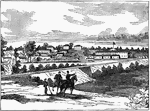
Iuka Springs, 1862
The Battle of Iuka was an American Civil War battle fought on September 19, 1862, in Iuka, Mississippi.

Oliver Cromwell
Oliver Cromwell (25 April 1599 Old Style– 3 September 1658 Old Style) was an English military…
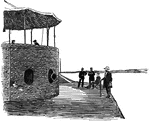
Monitor
Navy soldiers on the deck of the Monitor, a warship famous for the battle with the Merrimac.
![From the painting, "First Reading of the Emancipation Proclamation of President Lincoln" by Francis Bicknell Carpenter. From left to right: Edwin Stanton (Secretary of War), Salmon Chase (Secretary of the Treasury), Abraham Lincoln (President of the United States), Gideon Welles (Secretary of the Navy), Caleb B. Smith (Secretary of the Interior), William Seward [sitting] (Secretary of State), Montgomery Blair (Postmaster General), and Edward Bates (Attorney General).](https://etc.usf.edu/clipart/56400/56428/56428_emanc_proc_mth.gif)
Emancipation Proclamation
From the painting, "First Reading of the Emancipation Proclamation of President Lincoln" by Francis…

Cotton Centennial
A cotton press yard of the Cotton Centennial in the 1884 World's Fair in New Orleans, Louisiana.
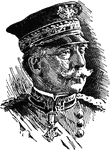
Nelson A. Miles
(1839-1925) American soldier who sirved in the Civil War, Indian Wars, and the Spanish-American War.
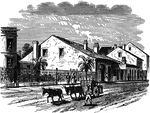
The Old Courthouse Where Jackson was Fined for Contempt of Court
When civil law was restored, Jackson was fined for contempt of court for proclaiming martial law in…
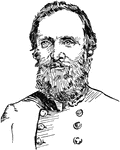
Thomas J. (Stonewall) Jackson
Thomas Jonathan "Stonewall" Jackson (January 21, 1824 – May 10, 1863) was a Confederate general…
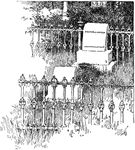
Grave of Thomas J. Jackson
Thomas Jonathan "Stonewall" Jackson (January 21, 1824 – May 10, 1863) was a Confederate general…

Fort Jefferson, Garden Key
Fort Jefferson was built in 1826 in Garden Key, Florida and used in the American Civil War.





